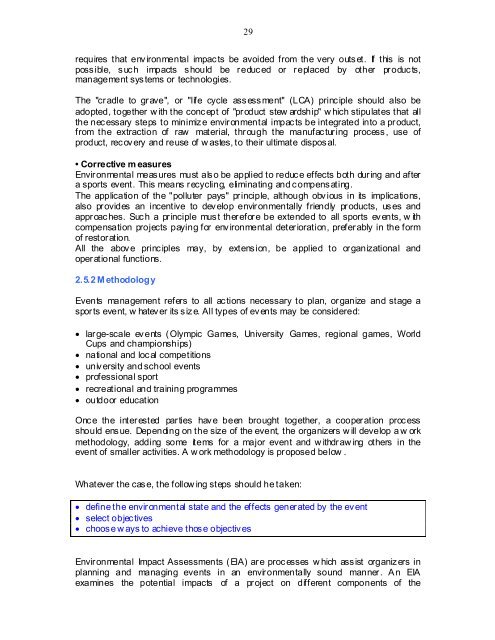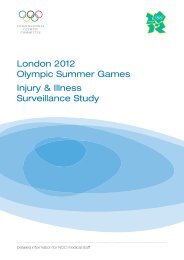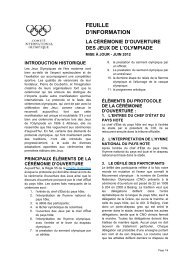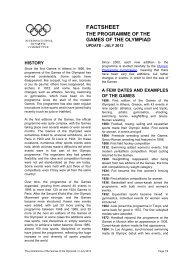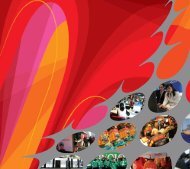MANUAL SPORT ENVIRONMENT
MANUAL SPORT ENVIRONMENT
MANUAL SPORT ENVIRONMENT
Create successful ePaper yourself
Turn your PDF publications into a flip-book with our unique Google optimized e-Paper software.
29<br />
requires that env ironmental impac ts be avoided from the very outs et. If this is not<br />
poss ible, s uc h impacts s hould be reduc ed or replaced by other produc ts,<br />
management sys tems or technologies.<br />
The "cradle to grave", or "life cycle ass ess ment" (LCA) princ iple should also be<br />
adopted, together w ith the conc ept of "product stew ardship" w hich stipulates that all<br />
the nec essary steps to minimiz e environmental impac ts be integrated into a product,<br />
from the extraction of raw material, through the manufac turing process , use of<br />
product, rec ov ery and reuse of w astes, to their ultimate dispos al.<br />
• Corrective m easures<br />
Environmental meas ures must als o be applied to reduc e effects both during and after<br />
a sports event. This means recycling, eliminating and compensating.<br />
The application of the "polluter pays" principle, although obv ious in its implications,<br />
also provides an incentive to dev elop environmentally friendly products, us es and<br />
approac hes. Suc h a principle mus t therefore be extended to all sports ev ents, w ith<br />
compensation projects paying for env ironmental deterioration, preferably in the form<br />
of restoration.<br />
All the abov e princ iples may, by extens ion, be applied to organizational and<br />
operational functions.<br />
2.5.2 M ethodology<br />
Events management refers to all ac tions necessary to plan, organize and stage a<br />
sports event, w hatev er its s iz e. All types of ev ents may be considered:<br />
• large-scale ev ents (Olympic Games, University Games, regional games, World<br />
Cups and championships)<br />
• national and loc al competitions<br />
• univ ersity and school events<br />
• professional sport<br />
• recreational and training programmes<br />
• outdoor education<br />
Onc e the interested parties hav e been brought together, a cooperation proc ess<br />
should ens ue. Depending on the size of the event, the organizers w ill develop a w ork<br />
methodology, adding some items for a major event and w ithdraw ing others in the<br />
event of smaller activities. A w ork methodology is proposed below .<br />
Whatever the cas e, the follow ing steps should he taken:<br />
• define the environmental state and the effects generated by the ev ent<br />
• select objectives<br />
• choos e w ays to achieve thos e objectiv es<br />
Environmental Impact Assessments (EIA) are proc esses w hich ass ist organiz ers in<br />
planning and managing events in an environmentally sound manner. A n EIA<br />
examines the potential impacts of a project on different components of the


